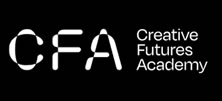Course Summary
Apply the principles of data visualisation to the analysis, design and communication of information in order to provide insights, clarity and meaning.
The aim of data visualisation is to effectively communicate information through a graphical means. This course aims to provide an understanding of the theory underpinning the field of data visualisation and to provide an introduction to the practicalities of creating effective graphical representations of data.
The course is suitable for individuals involved in the collection, analysis or interpretation of data, as well as for those responsible for the communication of data to a range of audiences.
The course will use the data visualization application Tableau. In addition, the open source software environment R together with a number of its data visualization libraries including ggplot2, Plotly and the mapping library Leaflet will be used. No prior experience with Tableau or R will be assumed.
On successful completion of this course, you will be able to:
1. Identify and critically appraise the history of data visualisation, the work of key practitioners and the emerging themes and critical debates relating to a data-driven society.
2. Apply the grammar of graphics and appreciate its role in the design of appropriate visuals.
3. Create graphics that visualise data in one, two and higher dimensions using proprietary and open source software tools.
4. Explore the emerging role of geospatial analysis in data analysis and develop interactive map-based visualisations.
5. Appreciate the role of statistical reasoning in data analysis and develop surveillance models for visualising data collected over time.
College Link
Career Sectors
This course prepares you for working in the Career Sectors below. Follow the links to get a fuller understanding of the sectors you are preparing for.
Entry Requirements
An undergraduate qualification of 2nd Class Honours or higher at Honours Degree Level.
Those without this qualification may be considered provided they can demonstrate Honours Degree equivalence, which can be verified through the RPL (recognition of prior learning) process. Typically, RPL candidates should have professional experience of 2-3 years in Data Visualisation, Information Design, or a related field.
Application Details
Please note:
IADT operates a rolling admissions policy for graduate taught courses, with decisions issued in 4 weeks after a submitted and complete application is received. An application is incomplete until you provide all required items on the checklist (including the application fee, if applicable).
Generally, courses will remain open to applications until all places are filled.
Application Date:
31/08/2025
The Student
Career Interests
This course is typically suited for people with the following Career Interests. If these interests do not describe you, this course may prepare you for work you may not find satisfying.
Creative
Creative people are drawn to careers and activities that enable them to take responsibility for the design, layout or sensory impact of something (visual, auditory etc). They may be atrracted to the traditional artistic pursuits such as painting, sculpture, singing, or music. Or they may show more interest in design activities, such as architecture, animation, or craft areas, such as pottery and ceramics.
Creative people use their personal understanding of people and the world they live in to guide their work. Creative people like to work in unstructured workplaces, enjoy taking risks and prefer a minimum of routine.
Investigative
The Investigative person will usually find a particular area of science to be of interest. They are inclined toward intellectual and analytical activities and enjoy observation and theory. They may prefer thought to action, and enjoy the challenge of solving problems with sophiscticated technology. These types prefer mentally stimulating environments and often pay close attention to developments in their chosen field.





